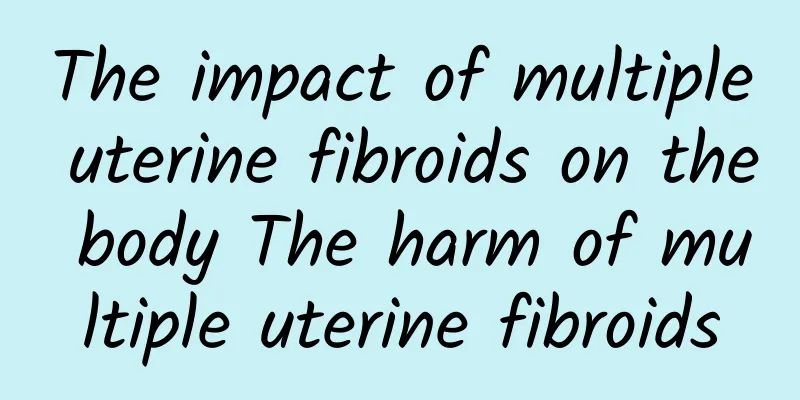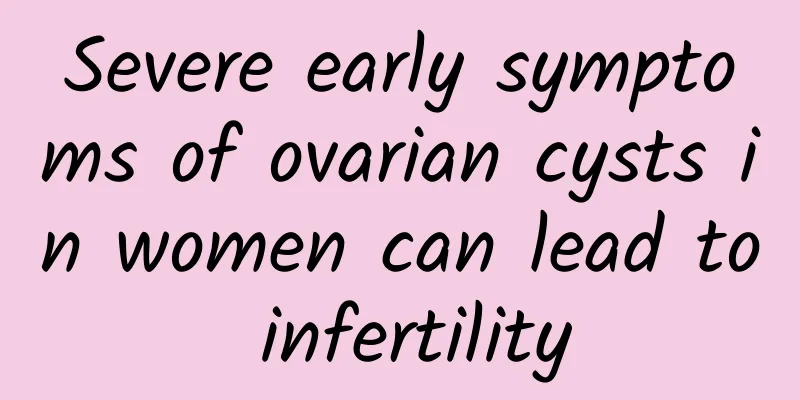The impact of multiple uterine fibroids on the body The harm of multiple uterine fibroids

|
Uterine fibroids are the most common tumors in the female reproductive organs, with a high incidence rate of about 30% in women aged 30 to 50, and an infertility incidence rate of 25% to 35%, which is becoming younger. Currently, the cause of uterine fibroids is still unclear. Uterine fibroids increase the area of the endometrium, hinder uterine contraction, affect blood circulation, and cause endometrial congestion, so the most typical symptom is excessive menstruation. Uterine fibroids can also cause increased vaginal discharge, pus-like, and accompanied by a peculiar smell. In addition, some larger fibroids can be felt. In the morning, lie flat on the bed with an empty stomach, bend your legs slightly, and relax your abdomen. Press with your hands to find larger lumps. The hazard analysis of multiple uterine fibroids is as follows: First, it causes pain, which manifests as lower limb edema or neuralgia, lower abdomen and back pain. Second, increased vaginal discharge. If the pelvic cavity is congested, endometrial edema will also cause increased vaginal discharge. Submucosal fibroids produce a large amount of bloody or odorous vaginal discharge. 3. Infertility. Experts say that submucosal fibroids can easily infect the endometrium, which is not conducive to the implantation of fertilized eggs. Giant multiple uterine fibroids can easily squeeze the interstitial part of the fallopian tube, blocking the passage of sperm. Uterine fibroids can expand the muscle wall or endometrial vein congestion, change the intrauterine environment, which is not conducive to the implantation of fertilized eggs and lead to infertility. 4. Miscarriage and dystocia. The incidence of miscarriage in pregnant women with uterine fibroids is 2 to 3 times that of pregnant women without uterine fibroids, and it is usually an incomplete miscarriage. During the delivery process, the fibroids affect the normal contraction of the uterus, and the delivery process can be prolonged; fibroids embedded in the pelvic cavity can block the birth canal and cause dystocia. |
<<: How to treat multiple uterine fibroids? What are the treatments for multiple uterine fibroids?
Recommend
What are the ways to prevent shoulder dystocia?
After giving birth, expectant mothers will defini...
How many types of ovarian cysts are there?
The ovary is the place where a woman gives birth ...
Losing weight helps the body cleanse and detoxify, drinking water alone is not enough! Eating the right high-water-content vegetables and fruits is the key
Water is indispensable for life and exists in foo...
What are the causes of dysmenorrhea in women?
What are the causes of dysmenorrhea in women? Exp...
Does third degree cervical erosion need treatment?
The third degree of cervical erosion does not req...
People should pay attention to the prevention methods of cervical erosion in life
Cervical erosion is a common disease that can ser...
What are the clinical manifestations of cervical hypertrophy?
In life, cervical hypertrophy is a very common di...
Common medication misunderstandings in patients with threatened abortion
When women of childbearing age learn that they ha...
How harmful is cervicitis?
Gynecological diseases are a big trouble for fema...
Women should know in detail the precautions after abortion
Abortion is the most common solution for women wh...
What should I do if I have abdominal pain every time I have my period?
What should I do if I have abdominal pain every t...
What should I do if I have irregular menstruation due to uterine fibroids?
What should I do if I have irregular menstruation...
What are the symptoms of secondary dysmenorrhea?
Secondary dysmenorrhea is common in female friend...
How to cure endometrial tuberculosis
Endometrial tuberculosis is treated conservativel...
Do uterine fibroids affect pregnancy? Can uterine fibroids cause infertility?
In recent years, due to the high incidence of ute...









